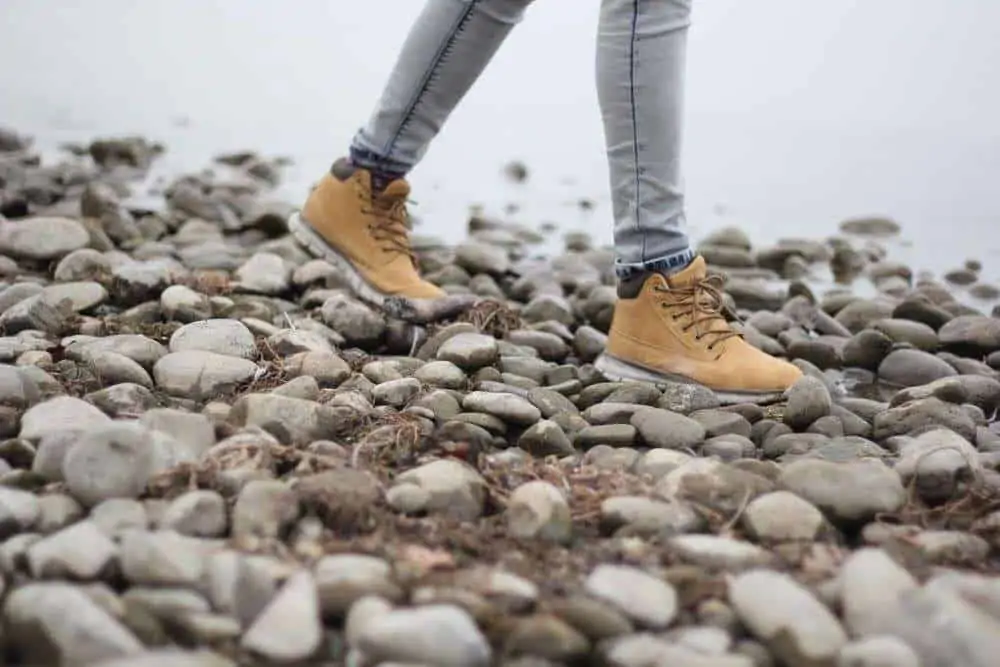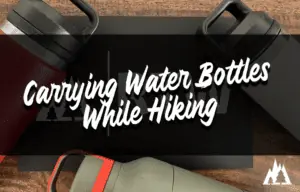How to Choose the Best Hiking Boots

Are you in the market for a new pair of hiking boots this year? Follow this guide to help you choose the best boots for your next hike.
Did you know that there are almost 50 million people who are hikers in America alone? It’s no surprise that hiking is a popular pastime for so many people. Hiking taps into the human desire to connect with nature, to leave the hustle and bustle of the city, and to exist in the great outdoors.
If you’re a hiker or would like to start hiking, you understand the attraction of spending hours out in the fresh air. But hiking is more than exploring and relaxing. Choosing the best hiking boots for you is one out of many serious considerations you need to take into account when preparing for a hike.
Your boots are, of course, what take the most damage on a hike. They’re what carry you across your journey. They are responsible for getting you through mud, rain, snow, mountains, sand, and more.
If your hiking boots fail you in the middle of a hike, it’s never good. This is why choosing the right hiking boots is one of the most important choices you can make. Let’s take a look at what makes a good hiking boot.
The Design of Hiking Boots
The design of your hiking boots is more important than you might expect. This is because there are several different designs which include low, medium, and high boot height. Choosing the right height for you is crucial for your comfortability when walking for long periods of time.
Low-Cut Boots
Let’s start with low-cut boots. Boots of this design cut off below the ankle and are ideal for hikes that are not too intensive. These are perfect for long walks on level, dry ground, and especially for forests and paths. If you’re a beginner hiker, this is the boot for you.
Another reason why low-cut boots are great for beginners is that they are usually cheap and lightweight. There is an increased danger level when hiking in these, though. That is because there is no ankle support and you can roll your ankle and injure yourself on more advanced hikes.
Because low-cut boots are cheaper and not meant for intense hikes, they may not be the most durable. They are also not recommended if you are carrying heavy equipment such as a backpack while hiking. If you are an advanced hiker, there are better options.
Mid-Cut Boots
Mid-cut boots, as their name suggests, cut off above the ankle. There can be variations in height depending on what brand you buy. These are also good boots for beginner hikers but offer a bit more support compared to the low-cut boots.
Like the low-cut boots, the mid-cut boots are lightweight. Because of their increased height, your ankles are protected from the elements. No more ankle scratches from thorns, stones, bugs, or animals.
Mid-cut boots also protect against ankle rolls which can produce nasty (and inconvenient) sprains. They tend to be more expensive than low-cut boots, but they can be a great investment. This is especially true if you are becoming more serious about hiking and wanting to advance your skill.
One such boot in this category that many hikers use on easy trails is Blundstone boots.
High-Cut Boots
High-cut boots are where it gets serious in the hiking world. These boots are heavy compared to the previous two designs and they are sturdy. You can go anywhere with these boots.
They are insulated and very warm. They tend to measure up to the mid-calf. This makes them perfect for mountaineers or hikers who plan on trekking through the snow.
There’s no chance of rolling your ankle in these boots, and certainly no chance of your lower legs falling victim to the elements. More often than not, this type of boot is waterproof which is perfect for protecting your feet in cold, wet, or snowy weather.
When walking, these boots tend to heat up. This can be a boon or a curse depending on the environment you’re in. If you’re a professional hiker, even though these boots can be costly, the investment is worth it.
The Right Material for New Hiking Boots
There are several options when it comes to choosing the material for your hiking boots, but the most popular choices are leather and synthetic materials. Synthetic boots can be found at any outdoor enthusiast store and are very in demand. However, their popularity doesn’t mean they’re right for you.
Synthetic Boots
Synthetic boots are beloved because of how lightweight they are. They are also very durable and need next to no maintenance. They are easy to break in, comfortable, and above all, affordable.
Are synthetic boots too good to be true? They can be. Even though they are durable, they still have a tendency to fall apart after enough wear and tear.
Synthetic boots are also not known for their waterproof properties, which can be a problem for more serious hikers. Finally, they lack breathability which can be a problem on long or intense hikes where your feet risk overheating. These may be better for beginner or hobby hikers than for professionals.
No hiker wants to be stranded in the middle of a hike because of worn-out boots.
Leather Boots
There are two types of leather boots that hikers enjoy: split-grain and full-grain leather. Split-grain leather, as its name implies, is half made with synthetic materials and half made with real leather.
This boot is the best of both worlds. It has the breathability of natural leather but the lightness of synthetic materials, and not much upkeep is required. Unfortunately, these boots are not very durable or waterproof.
On the other hand, we half full-grain leather. This is the real deal. Full-grain leather boots are durable and can get hikers through anything.
Full-grain leather boots are also waterproof and thick which helps with keeping your feet warm. The downside is that leather boots are not as comfortable as synthetic boots and take a long time to break in. They are also not very breathable which can lead to hot feet when hiking.
Finding the Perfect Fit
Finding the perfect fit for your hiking boots is, of course, very important. Even if you bought the best hiking boots on the market, if they don’t fit you properly, they’re not the perfect boots for you.
Boots that fit well can be a matter of life and death to a hiker. A poor-fitting boot can cause blisters, rashes, sore feet, and a bad disposition on your hike. The wrong pair of boots might even force you to cut a hike short because walking in them is too uncomfortable.
So, how do you find the right fit?
Signs to Look For When Choosing the Perfect Fit
There are a few clues you can look for when trying on new hiking boots. The trick is often in the socks.
A good test is to try on hiking boots while wearing thin socks. Of course, you won’t be wearing thin socks while hiking, but there is a method to this madness. Wearing thin socks when trying on boots allows you to immediately find any parts of the boot that are uncomfortable.
A thin sock will let you discover any irritating nooks or crannies inside the boot that you might not notice right away when wearing thicker socks. After you explore a pair of boots with thin socks, try moving on to the thicker socks you plan on hiking in.
Thin to Thick Socks
By trying boots with thicker socks, you are testing for the overall fit. Your boot should feel a bit snug, but not tight. A good hiking boot is meant to hold your foot in place.
If your foot is bumping around inside your boots, the boots may not be right for you. On the other hand, if your boot is a little too tight, you’ll be experiencing a lot of pain on your hikes because you didn’t account for foot swelling.
A good tactic before buying a pair of hiking boots is to try them on in the store and walk around for a few minutes. While you won’t have the chance to break in the boots, you will have the opportunity to get an overall feel of their tightness, cushion, and how they mold to your feet.
You will also be able to see if there are any irritation points on the boots that are immediately noticeable. Often, these points are around the ankles, heels, and toes. If you start to feel any irritation in the first few minutes of walking around in a pair of new boots, try another pair because the irritation will only get worse on a real hike.
The Midsole
The midsole of any boot should never be ignored. A good midsole can offer a great deal of comfort to the wearer. More than that, they are also important for cushioning your joints when hiking on harsh ground by acting as a buffer.
Midsoles come in a variety of different materials such as ethylene vinyl acetate (EVA) and polyurethane. EVA is a foamy and bouncy material that is great for cushioning and for keeping your momentum when hiking. EVA is more commonly found in cheaper, lightweight boots.
Polyurethane is stiff compared to EVA and costly. However, it is the preferred choice of professional hikers because they are more durable and better for long-distance treks. Choosing the right midsole depends on your hiking experience and what kind of hikes you plan on taking your boots on.
The Sole of the Boot
While the design, material, and fit of your hiking boots are all very important, they’re dwarfed by the significance of the sole. If you don’t have a good sole for your boots, you’re not going anywhere.
The primary function of the sole is for gripping the land or rocks you walk on. If your boots have soles with poor gripping ability, this can not only be exhausting but also dangerous. A sole’s gripping ability is determined by the material it’s made from.
Hiking boot soles are, more often than not, made out of different types of rubber. Determining the best rubber sole is up to you because they both have their pros and cons. For example, there are some rubber soles that are soft and springy which give them great gripping ability.
Unfortunately, because these soles are so soft, they have durability issues and do not last very long. On the other hand, if you opt for harder rubber soles, they will be much more durable but have a higher risk of slipping as well.
What About the Lugs?
If you’re new to hiking lingo, you might not be familiar with lugs. Lugs are what give soles their gripping ability. While they are not as pronounced as soccer cleats, they work in a similar fashion. The larger and more properly spaced the lugs, the better traction you’ll have on your hikes.
The best types of lugs are those that are well spaced-out as to not collect a bunch of mud and earth on your soles. This collection of earth can increase the risk of slipping and can be a pain to clean out later on. While it can be hard to tell which boot has the best lugs in a store, they are important to take into consideration.
Choosing Your Best Hiking Boots
Now that you better understand what makes a good hiking boot, you have the knowledge to choose the best hiking boots for you. Depending on what kind of hiker you are, you can weigh the pros and cons of different types of boots.
You understand the difference between lightweight and heavyweight boots, synthetic and leather, designs, and soles. Whether you’re an experienced hiker looking for new boots or a beginner wanting to buy your first pair, you know what to look for.
So, what are you waiting for? Check out our page for more about hiking and the great outdoors.






